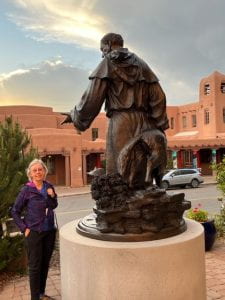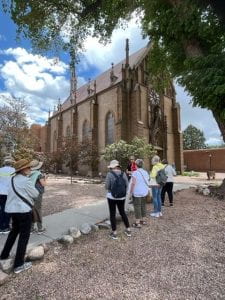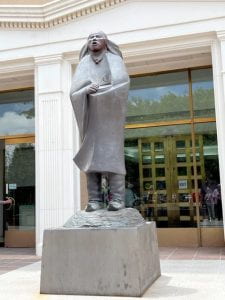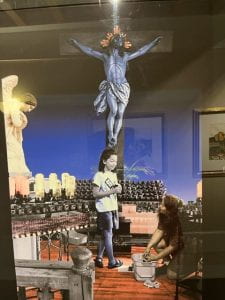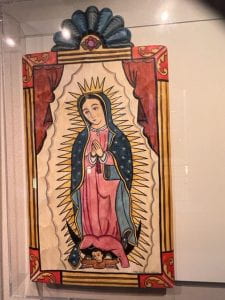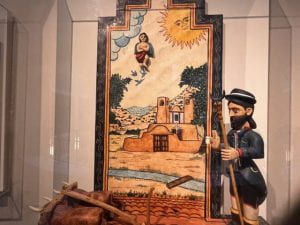Below the ghostly image of Shipock to our west as we ventured toward Santa Fe. The other shot is the San Juan Valley to the southeast of Mesa Verde. Shiprock is either a ship or a giant bird, if you listen to legends of native and invading people. It is reverenced as a sacred monument, one way or the other.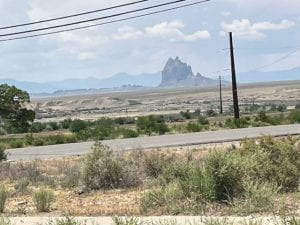
Beyond the top of the Plaza in Santa Fe stands the St. Francis Basilica, the founding symbol of the city. The namesake of Santa Fe is St. Francis, who reaches out to the people below. The plaza of Santa Fe used to extend right up to the church and statue, so citizens were never far away. Business has since pushed the plaza a half mile to the south.
Below the San Miguel Church, oldest in Santa Fe. On the wall behind the altar are memorial cameos of local and universal saints, including St. Francis and his collegial saint, Clare. They were beloved for their ministry to the poor of Assisi in Italy, but also for their ongoing devotion to their patron/ matron city.
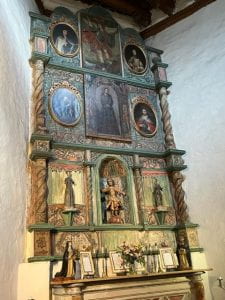
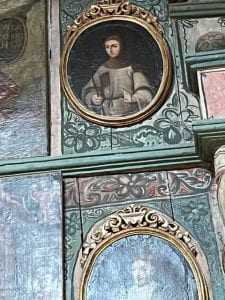
St. Clare of Assisi
The San Loretto Chapel is famous for its winding staircase, built by an itinerant carpenter for the Sister of Loretto, who had been awkwardly climbing to the choir loft by a rope ladder. The legend said he disappeared before payment could be made, but the true account is that he was paid appropriately for his skilled work.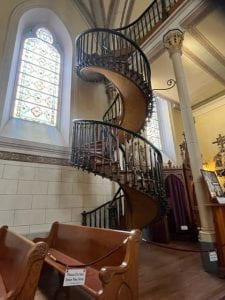
The path to the State Capitol is lined on one side by a metal frame of twelve distinct citizen-heads in silhouette and topped by razor wire usually sighted at the top of prison walls– a mixed message to say the least. Less ambiguous is the statue of the Pueblo warrior Propé, who organized the Pueblo Revolt of 1680, driving the Spanish out of Santa Fe for twelve years. This hero suggests that the land occupied by the whites of different nationalities ultimately belonged to the Pueblo nations.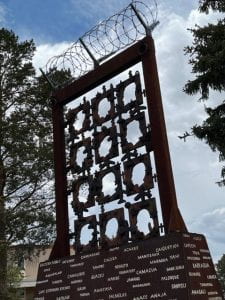
Within the State Capitol are surprising varieties of Native and Colonial art ranging from the remarkable collages of a larger-than-life bison head and photograph of an Indian child juxtaposed with a painted crucifix to traditional paintings of Our Lady of Peace
and the renowned farmer who introduced the famous sisters-corn, beans, and squash– to the Pueblo. The Capitol paid appropriate tribute to the first citizens of New Mexico.



